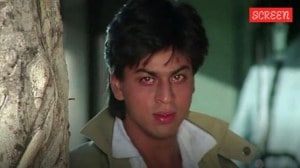Friendly neighbourhood icons
Who or what is an icon? Lauren Bacall, smouldering star of the forties, set the cat among the pigeons recently by observing that it was absu...

Who or what is an icon? Lauren Bacall, smouldering star of the forties, set the cat among the pigeons recently by observing that it was absurd to think of Nicole Kidman, her co-star in a film then under production, as an ‘‘icon’’. The media, ever quick to seize upon the inane, instantly trumpeted her casual comment treating it as evidence of a fast developing catfight leaving the veteran actress later bemusedly to explain that what she had meant was that “she’s (Kidman) young, she has so much left in her…”
Bacall’s explanation makes sense when viewed against the Oxford Dictionary definition of icon as: ‘‘a devotional painting of Christ or another holy figure’’ or ‘‘a person or thing regarded as representative symbol or as worthy of veneration’’. Why would someone want to take a lively, healthy (if acutely skinny can be called healthy) woman and turn her into a saint seemed to be the plaintive plea underlying Bacall’s observation.
The answer, of course, is simple. We live in an age of hyperbole and small achievements where people do not have to be dead, as Bacall pointed out, to be ‘‘legends’’ and immense accolades come quick and easy to those who fit the preoccupation of the times. Celebrities deemed deserving of media attention are rated as ‘‘sexiest’’ and ‘‘most beautiful’’ in the world. Books are bestsellers before they are read. A little success turns newcomers into veterans. And the notion of a ‘‘lifetime of achievement’’ has a qualitatively different connotation than it used to. All this, however, is well known to us, particularly in India where the celebrity cult though relatively recent, has become a full-fledged business, endorsed no doubt by the marketing industry that needs recognisable faces to sell products.
But this column is not about the deplorable nature of this practice and its attendant ills, but rather, seeing the phenomenon to its logical end. Where will all this indiscriminate gushing and prurience about glamorous people lead? To make a prediction one needs to look at the needs our so-called modern ‘‘icons’’ serve. In Bacall’s days, icons had a dreamlike quality. Today’s icons, despite the hype, are far more accessible. In the past they might have been inspirational, today they are at best, aspirational. But they are more than this.
In our country we have seen, for instance, that elections, civic crises like the recent Mumbai downpour, even burglaries and legal problems are now brought to us through the experiences of glamorous people. A couple of days ago, Screen editor, Bhawana Somaaya, writing on these pages, commented on the unabashed ease with which stars pour out their tribulations to the media, even manipulating the publicity that ensues from their personal crises. The crassness is undeniable. At the same time, looked at from the other side, one wonders if there is a tacit pact on the part of the consumers of such outpourings. We indulge our celebrities even when we know they are manipulating the means of reaching us because in their problems we find reflected social dilemmas that affect all of us. It is in execrable taste to discuss the personal in public. So we leave it to celebrities. The saga of Jen and Brad and Angelina, for example, offers a suitably long look, if we are so inclined, at the travails of contemporary marriage. In other words, the celebrity has become a representative of Everyman.
This, of course, is not what the celebrity wants to be. The politician aims to represent the common man. The celebrity aims to be special. But the pitfall of excessive attention is that image can no longer be controlled. Oddly the best example of this was provided not too long ago by Nicole Kidman’s ex-husband himself. Tom Cruise’s appearance on the Oprah Winfrey show where he jumped up and down on her couch and fell on his knees to display his love for debutante actress Katie Holmes, not only led to the coining of a new pejorative phrase but was widely criticised as a desperate publicity stunt. It may seem a flash in the pan. But it is likely to be a growing trend. The more we see of celebrities, the more they will become flawed and ridiculous. And the more desperate they will be to please and impress us, the more we will adapt them to our uses. In the long run, then, an ‘‘icon’’ will probably come to be closer to its other dictionary meaning, which is: “A symbol or graphic representation on a VDU screen of a programme, option, or window.” From saint to smiley is a long way for an icon to travel. Bacall, with her sense of humour, would appreciate the irony.



- 01
- 02
- 03
- 04
- 05




























